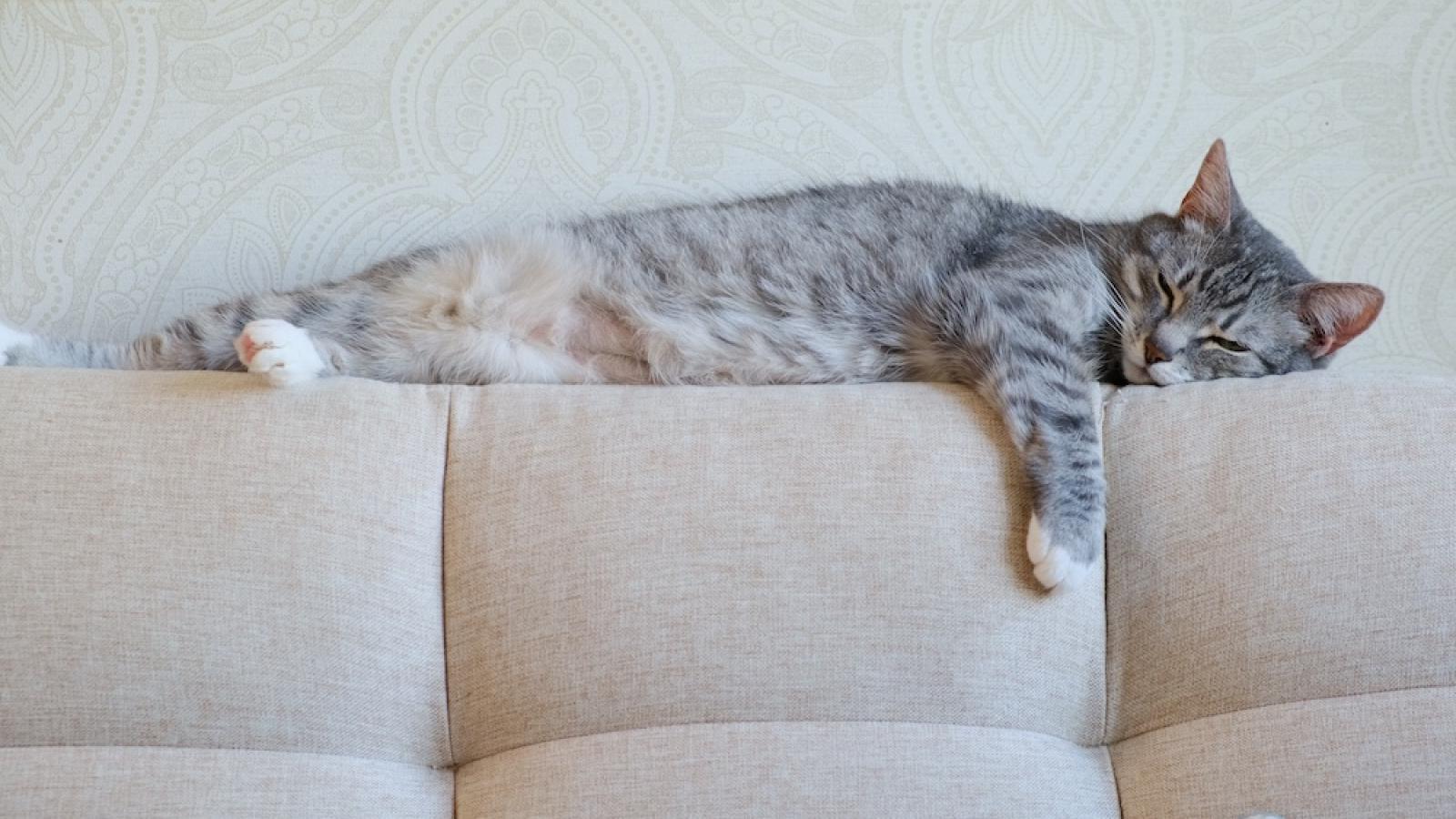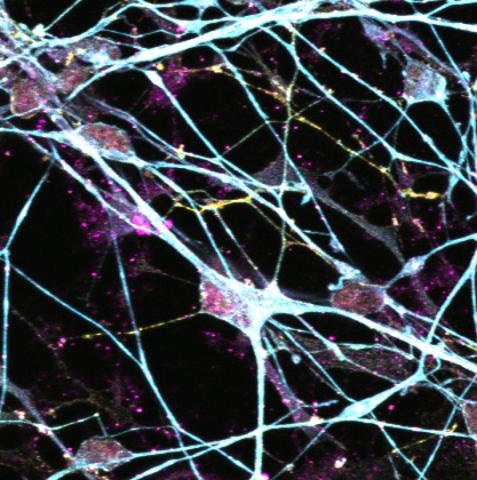Research led by Prof Tara Spires-Jones (UK DRI at Edinburgh) and Dr Robert McGeachan (University of Edinburgh) reveals cats with dementia have brain changes similar to those of people with Alzheimer’s disease, offering a valuable model for studying the condition in humans. The study is published in the European Journal of Neuroscience.
Scientists examined the brains of 25 cats of different ages after they had passed away, including those with signs of dementia. They discovered a build-up of toxic amyloid-beta within the synapses – connections between brain cells – of older cats and cats with dementia.
The research team also found evidence that astrocytes and microglia – types of support cells in the brain – engulfed or ‘ate’ the affected synapses. This process, called synaptic pruning, is important during brain development but can contribute to synapse loss in dementia.
Many older cats develop dementia, leading to behavioural changes such as increased vocalisation – or meowing – confusion and disrupted sleep – symptoms similar to those seen in people with Alzheimer’s disease. Experts say the findings will not only help to understand and manage dementia in cats but, given their similarities, could also contribute to the development of future treatments for people with Alzheimer’s disease.
Scientists studying Alzheimer’s disease in the past have relied heavily on genetically modified rodent models. Rodents do not naturally develop dementia, and studying cats with dementia has the potential to advance knowledge and help develop treatments for both cats and people.
Dementia is a devastating disease - whether it affects humans, cats, or dogs. Our findings highlight the striking similarities between feline dementia and Alzheimer’s disease in people. This opens the door to exploring whether promising new treatments for human Alzheimer’s disease could also help our ageing pets. Because cats naturally develop these brain changes, they may also offer a more accurate model of the disease than traditional laboratory animals, ultimately benefiting both species and their caregivers.
Dr Robert McGeachanUniversity of Edinburgh’s Royal (Dick) School of Veterinary Studies
Professor Danièlle Gunn-Moore, Personal Chair of Feline Medicine at the Royal (Dick) School of Veterinary Studies, said:
“Feline dementia is so distressing for the cat and for its person. It is by undertaking studies like this that we will understand how best to treat them. This will be wonderful for the cats, their owners, people with Alzheimer’s and their loved ones. Feline dementia is the perfect natural model for Alzheimer’s, everyone benefits.”
Source: University of Edinburgh
Reference: McGeachan, R., L. Ewbank, M. Watt, et al. 2025. “ Amyloid-Beta Pathology Increases Synaptic Engulfment by Glia in Feline Cognitive Dysfunction Syndrome: A Naturally Occurring Model of Alzheimer's Disease.” European Journal of Neuroscience 62, no. 3: e70180. https://doi.org/10.1111/ejn.70180.

